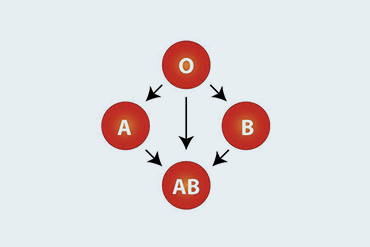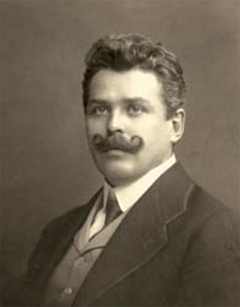Blood types
The discovery of blood types at the beginning of the 20th century opened the door to safe blood transfusions.

The compatibility of blood types: Blood type 0 does not express any surface antigen, it can be received by any of the four blood type recipients. The AB blood type red blood cells express both A and B antigens on the surface and does not contain any antibodies in the serum. Therefore the AB blood can receive any of the four blood types (no antibodies to recognize the antigen), but cannot be transfused to any of the three 0, A or B blood type.

Jan Jánský
1873 - 1921Before blood types were discovered, mixing incopatible blood types during transfusion resulting in blood coagulatin had fatal consequences for the recipient patients.
The blood types were discovered independently by three different researchers:
Karl Landsteiner discovered three of the four blood types in 1901 and for his life-long contribution to haematology was awarded the Nobel Prize in Physiology and Medicine 1930. Jan Jansky’s independent discovery and classification of the four blood cell types 0, A, B and AB in 1907 has been officially acknowledged by American medical commission in 1921 and is in use until today. The four blood types were independently discovered in 1910 by W. L. Moss in America.
The differences in blood types are given by the presence or absence of certain antigens on the surface of the red blood cells and the presence of antibodies in the blood plasma. For example, individuals with A blood type have antigen A expressed on the surface of the blood cell and antibody against antigen B in the serum. If red blood cells type B expressing antigen B on their surface were tranfused to this patient, the antibodies in the serum would immediately coagulate the transfused red blood cells. Therefore, blood type A individuals can only receive transfusion of blood type A, or of type O that do not express any surface antigens.

